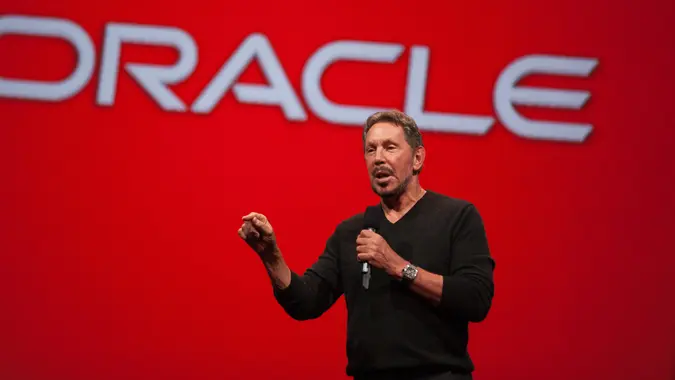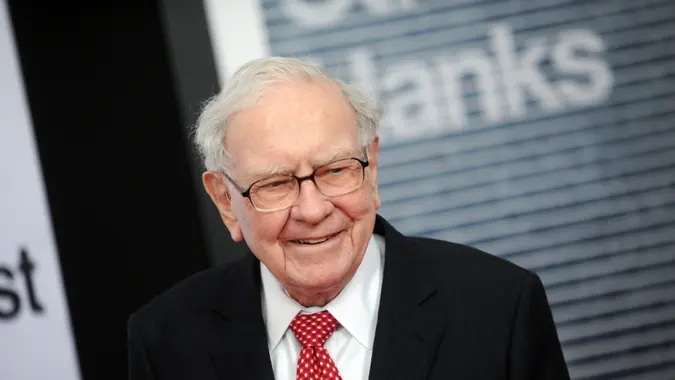3 Safest Investments To Hold In The Current Trump Economy

Commitment to Our Readers
GOBankingRates' editorial team is committed to bringing you unbiased reviews and information. We use data-driven methodologies to evaluate financial products and services - our reviews and ratings are not influenced by advertisers. You can read more about our editorial guidelines and our products and services review methodology.

20 Years
Helping You Live Richer

Reviewed
by Experts

Trusted by
Millions of Readers
The Trump economy is marked by tax cuts, tariffs and shifting Federal Reserve interest-rate policy. Inflation stood at 2.9% in August 2025, according to the U.S. Bureau of Labor Statistics, while the Federal Reserve recently held interest rates at 4% to 4.25%. With borrowing costs elevated and supply chains still under pressure, investors are focusing on where they can keep their money secure.
Here are three safe investments to consider in the Trump economy.
1. Gold
Precious metals remain a cornerstone for stability. The World Gold Council reports that global demand climbed 3% year over year in the second quarter of 2025, reaching 1,249 tonnes. Eugene Edwards, founder of Eugene Financial Services, said investors often turn to safe-haven assets in uncertain times. “Gold, in particular, maintains its purchasing power regardless of short-term policy moves and has historically provided a hedge against both inflation and currency fluctuations,” said Edwards.
2. Rural Opportunity Zone Funds
Created under Trump’s 2017 tax law, Opportunity Zones (OZ) were designed to channel investment into struggling communities by offering tax incentives. That origin ties them directly to the Trump economy, which has been defined by tariffs, tax shifts, and policies that use the tax code as a lever for growth. According to the IRS, capital gains rolled into a Qualified Opportunity Fund(QOF) can be deferred until 2026, but the biggest benefit comes only if the investment is held for at least 10 years, as all appreciation is exempt from federal capital gains tax.
Attorney Shavon Jones, co-founder of the Rural Revitalization Fund, said these vehicles, “have the potential to deliver better returns and greater safety than ETFs” because, unlike ETFs, rural OZs can eliminate taxes on long-term gains.
Still, OZs are not risk-free. The underlying assets are often rural real estate, which can be slow to appreciate, and liquidity is limited if you need to exit early. But for investors willing to hold through a decade, Jones noted that rural funds near AI data centers could be especially strong, since “major tech companies are investing so much money in data centers that these assets are poised to revive many rural communities.”
3. Fixed Income
For many investors, fixed-income assets remain the backbone of a safe portfolio. U.S. Treasuries are still considered the closest thing to risk-free because they are backed by the federal government, making them attractive when markets turn volatile.
Edwards also pointed to bonds, “Treasuries, high-grade municipal bonds, and defensive dividend stocks still hold value for conservative investors, but gold and other precious metals remain uniquely resilient.” His point shows that Treasuries help steady a portfolio when the market is volatile.
Other forms of fixed income, such as municipal and corporate bonds, provide dependable income with slightly more risk but often higher yields. Charles Urquhart, CFA and founder of Fixed Income Resources, explained that “investment-grade corporates should be in the mix, as well.” He added that one way to manage interest-rate swings is through a laddering strategy.
“One relatively simple way to do so is with a plain bond ladder based on maturities of one through five years. That strategy locks in today’s yields while preserving reinvestment flexibility as rates develop,” said Urquhart.
Together, Treasuries, munis and corporates give investors a range of fixed-income options without stepping too far outside conservative territory.
In a turbulent Trump economy, safety comes from balance. Combining havens, income and long-term tax advantages helps investors stay steady regardless of shifting policies.
More From GOBankingRates
- Nearly 1 in 3 Americans Hit by a Costly Holiday Scam, Norton Survey Shows -- How To Avoid This
- Here's What the Average Social Security Payment Will Be in Winter 2025
- How Middle-Class Earners Are Quietly Becoming Millionaires -- and How You Can, Too
- The Easiest Way to Score $250 for Things You Already Do
 Written by
Written by  Edited by
Edited by 

























